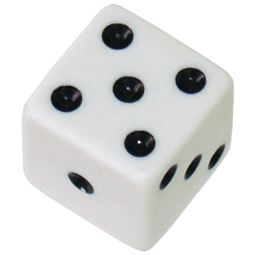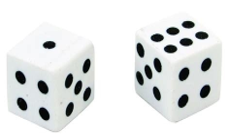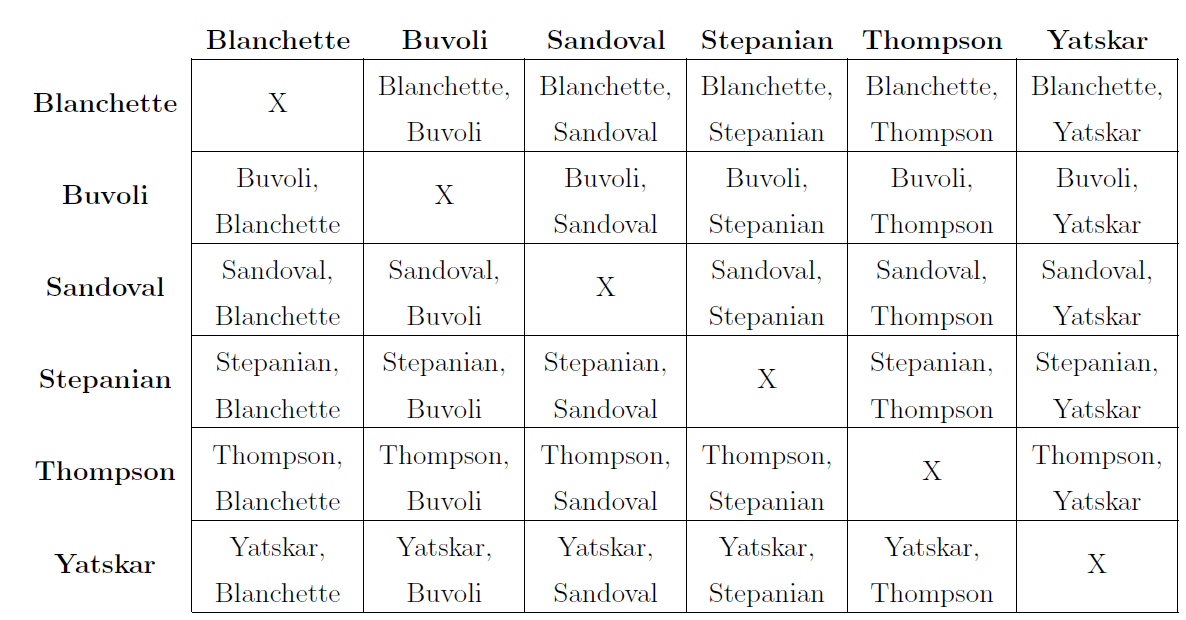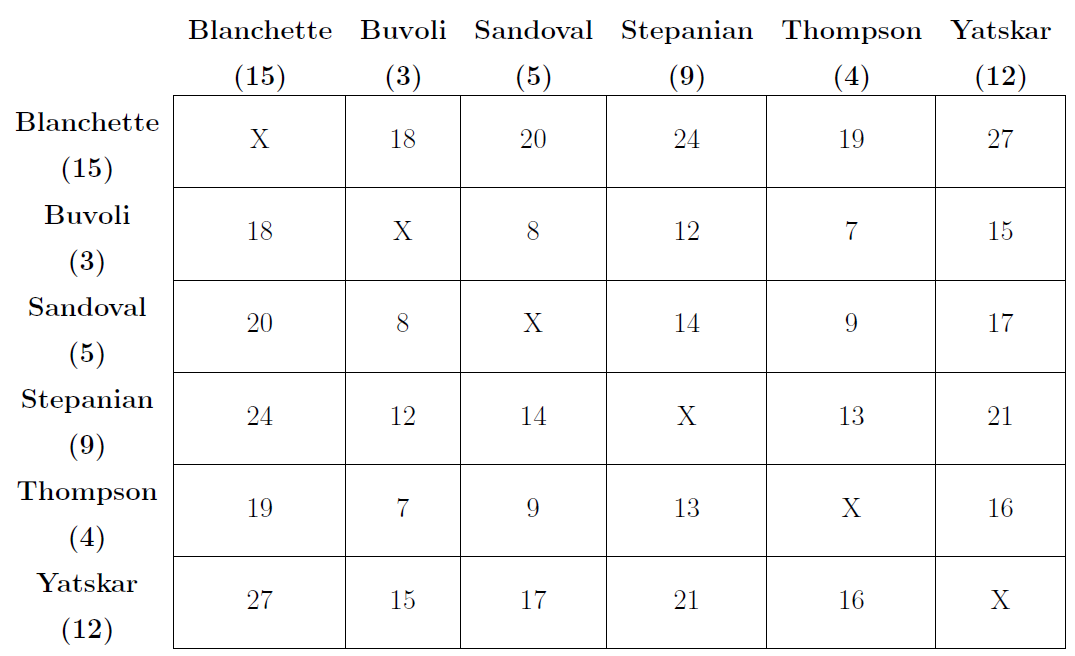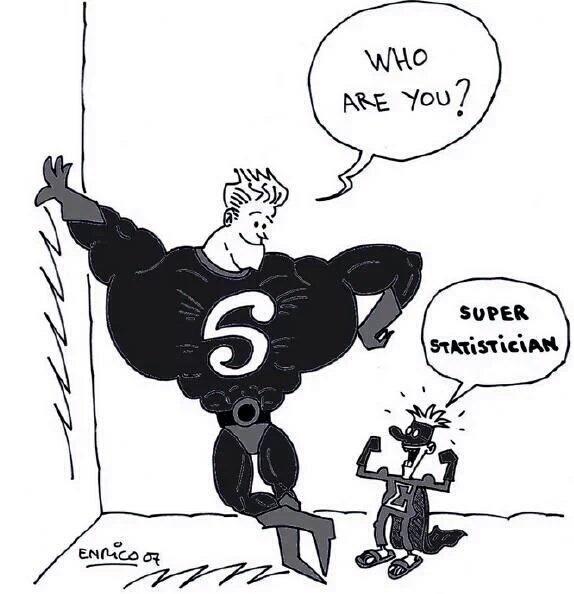── Attaching packages ─────────────────────────────────────── tidyverse 1.3.2 ──
✔ ggplot2 3.4.0 ✔ purrr 1.0.1
✔ tibble 3.1.8 ✔ dplyr 1.0.10
✔ tidyr 1.2.1 ✔ stringr 1.5.0
✔ readr 2.1.3 ✔ forcats 0.5.1
── Conflicts ────────────────────────────────────────── tidyverse_conflicts() ──
✖ dplyr::filter() masks stats::filter()
✖ dplyr::lag() masks stats::lag()
Starter Examples
In order to introduce probability concepts, you will notice that many sections of this book start out by talking about simple situations such as flipping a coin or rolling a die (or rolling a pair of dice). This is to ease the reader into more complicated examples.
A possibility space is a set of all of the possible outcomes.
Example 1: One Die
Consider rolling one six-sided die. For each of the following events, list their possible ways, and then find their probabilities:
- A: rolling an even number
- B: rolling a number greater than 3
- C: rolling a double-digit number
Starting to Combine
At first, we consider simply adding up the probabilities to compute the probability of the union of the probabilities:
## Inconsistent?
So far,
What went wrong? (Discuss with a neighbor)
Some Set Notation
The union of sets A and B is the set of all elements that appear either in set A OR set B
The intersection of sets A and B is the set of all elements that appear both in set A AND set B
Inclusion-Exclusion Principle
We observe that there was an overlap in the calculation. Since some elements were counted twice, we can compensate by subtracting one copy of that overlap. This notion is called the Inclusion-Exclusion Principle
To compute the probability of a set union, we need to consider the overlapping portions. For two sets A and B, the probability of observing the union is
Example 2: Two dice
Consider rolling two six-sided dice. Find the probability that their total is 8 or the second die shows a number greater or equal to 5.
Subtlety in Assumptions
In the previous example, we assumed a notion of sampling with replacement. That is, when rolling dice, we know that a number can be repeated. In other situations were observations cannot repeat, we are sampling without replacement.
Example 3: Faculty Matters
Consider a subset of the UC Merced Applied Math department with 6 faculty members—Blanchette, Buvoli, Sandoval, Stepanian, Thompson, Yatskar—must select two of its members to serve on a personnel review committee. Because the work will be time-consuming, no one is anxious to serve, so it is decided that the representatives will be selected by putting 6 slips of paper in a box, mixing them, and selecting two without replacement.
- What is the probability that both Thompson and Yatskar will be selected?
- What is the probability that at least one of the two members whose name begins with ‘B’ is selected?
- If the 6 faculty members have taught for 15, 3, 5, 9, 4, and 12 years, respectively, at the university, what is the probability that the two chosen representatives have at least a combined 10 years’ teaching experience at the university?
Looking Ahead
- due Fri., Jan. 20:
- Perceptions of Probability (survey)
- WHW1
- Identity Statement (essay)
- and the before-lecture quizzes
Exam 1 will be on Wed., Mar. 1
